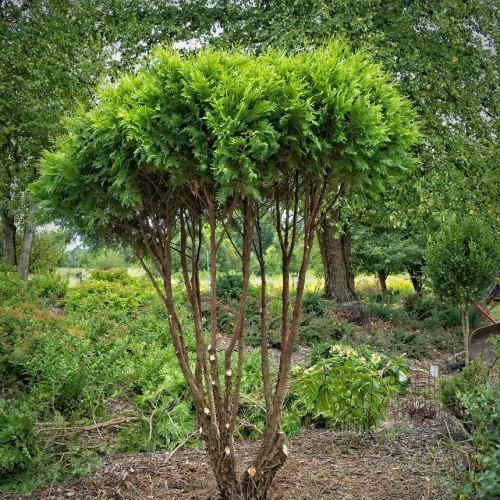
western red cedar
Thuja plicata 'Aurea'
Cycle:
Perennial
Watering:
Average
Hardiness Zone:
5 - 7
Flowers:
Flowers
Sun:
Full sun Partial sun Shade
Soil:
Loamy Clay Humus Rocky
Fruits:
Fruits In Summer Ready In Fall
Leaf:
Yes
Growth Rate:
Moderate
Maintenance:
Moderate
watering
The Western Red Cedar (Thuja plicata 'Aurea') should be watered frequently and generously. Water the plant deeply — until the soil is saturated and water begins to drain out of the bottom of the pot — about once a week, or when the top inch or 2 of soil is dry. During periods of hot, dry weather, the plant may require supplemental watering more frequently. Be sure to empty any drainage trays or pots after about 30 minutes of watering to ensure the roots of the plant are not sitting in water.
sunlight
Western red cedar (Thuja plicata ‘Aurea’) prefers full sun but will tolerate some shade. For best growth and color, it should receive at least 4 to 6 hours of direct sunlight per day. During the hot summer months, it should be shielded from the afternoon sun by providing some light protection, such as a shade cloth or trees/shrubs. Exposure to full sun can help promote more consistent growth and denser foliage.
pruning
Western red cedar (Thuja plicata 'Aurea') requires light pruning throughout the year in order to maintain its size and shape. Pruning should be done during late winter or early spring when the plant is dormancy. This is an important time for pruning as it will help to reduce any stress on the tree. Pruning should be done lightly, removing any broken, diseased, or unsightly branches. Any narrow-angled branch crotches should also be removed as they are more susceptible to breakage. Finally, thinning can be done to remove crossed or overcrowded branches in order to increase light and air penetration. All pruning should be done with sharp, sterilized pruning shears.
